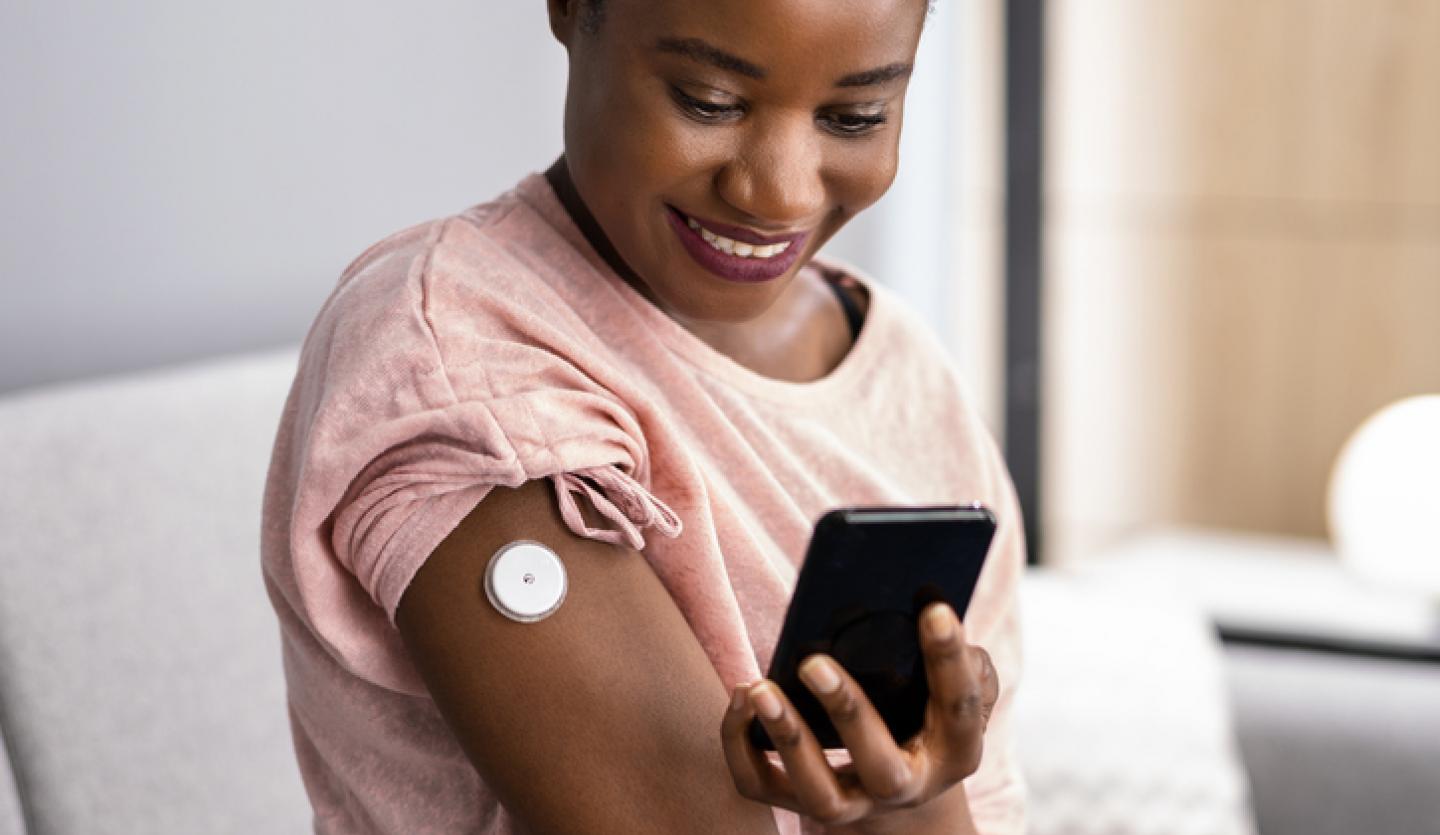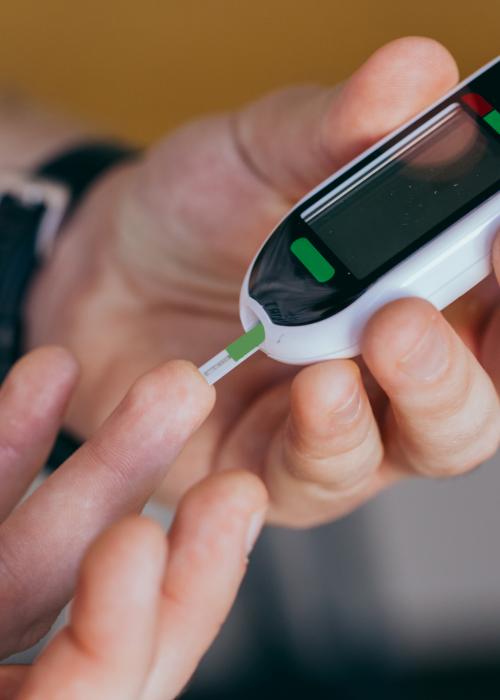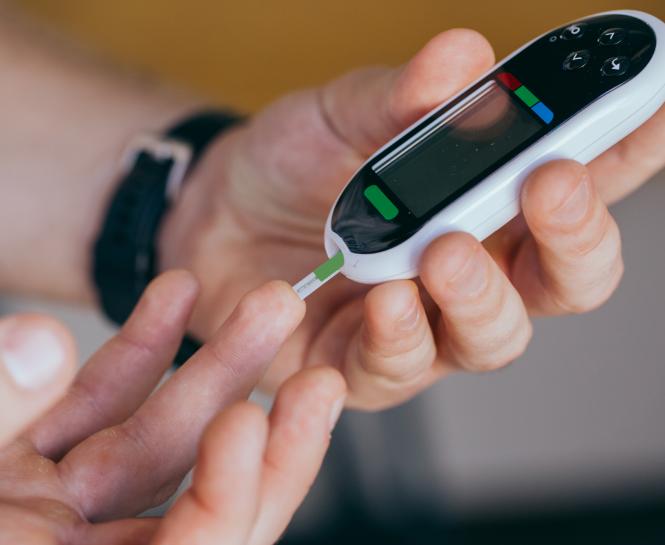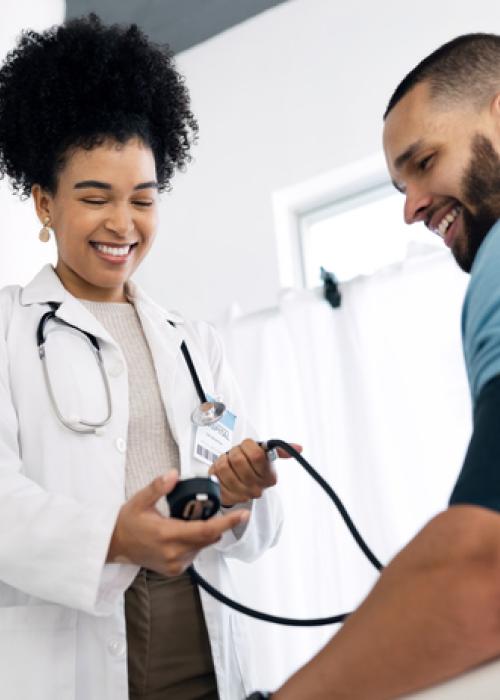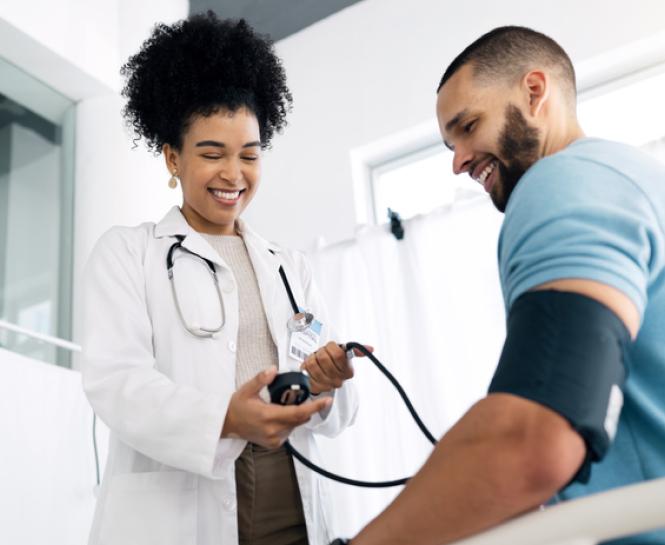Why should I check my blood glucose?
Checking your blood glucose (blood sugar) is essential for managing your type 1 or type 2 diabetes. Your blood glucose levels tell you how much glucose is in your bloodstream. Levels that are too low or too high can trigger uncomfortable symptoms or cause serious health problems.
Doctors connect blood glucose to many other health issues, including heart problems, high blood pressure and stroke. When you maintain good blood glucose levels, your overall health will improve.
How do I check my blood glucose?
You have several choices when checking glucose levels in your blood. Whether you check occasionally or continuously, monitoring your levels is the key to good health.
One option is a finger prick to check the blood using a hand-held blood glucose monitor and check strips. Take these steps to use this technique:
- Wash your hands with soap and warm water, then dry them thoroughly.
- Insert the paper check strip into the monitor.
- Use the device's tip to prick either side of your finger.
- Touch the paper check strip to the drop of blood on your finger.
- View your results on the screen and record them in a digital app.
Another method is a continuous glucose monitor (CGM) worn against the skin. A tiny sensor is inserted below the skin and constantly reads your blood glucose level. The device can send data to your cell phone and show how your blood glucose numbers look over time. Often, this method makes sense if you need to check frequently or have a history of high or low blood sugar events.
What do the numbers on my blood glucose monitor mean?
Blood glucose levels show the amount of blood sugar in milligrams per deciliter of blood (mg/dL). To get the most accurate blood glucose level reading, check after meals or first thing in the morning before eating or drinking.
When you check, your blood glucose number will tell you if you are in range, too high or too low. Keep in mind that these numbers are general examples and may not apply to your specific health. Talk to your doctor about the range best for you.
- Below 70 mg/dl. Too low.
- Between 70 mg/dl and 180 mg/dl. Target range.
- Above 180 mg/dl. Too high.
If your numbers are too low, eat a snack with 15 grams of carbohydrates and check again in 15 minutes. Repeat this until your numbers are in range. If your numbers are too high, you may need an insulin injection to bring your numbers within range.
What symptoms will I feel if my blood glucose levels are out of range?
Diet, medication, illness or stress all affect your blood glucose. Managing these factors can prevent dangerous levels that are too low or too high.
If you develop low blood sugar (hypoglycemia), you may experience:
- Dizziness or lightheadedness
- Feeling shaky
- Intense hunger
- Sweating
- Weakness
If you develop high blood sugar (hyperglycemia), you may experience:
- Blurred vision
- Frequent urination
- Headache
- Intense thirst or hunger
How frequently should I monitor my blood glucose?
Your blood sugar levels change throughout the day. Continuous monitoring lets you know if you need medicine or food. How frequently you check your blood glucose depends on your diabetes type and specific care plan. Your doctor will recommend how often you should check your blood glucose and if you need additional daily checking.
Talk to your doctor or diabetes care and education specialist about how often you should check your blood glucose level.
Find Care at Catholic Health
Call 866-MY-LI-DOC (866-695-4362) to find a Catholic Health physician near you. Diabetes Education Centers at Catholic Health hospitals and locations across Long Island offer personalized care for managing diabetes. Call 855-908-8989 to find a location near you. View our diabetes services.

